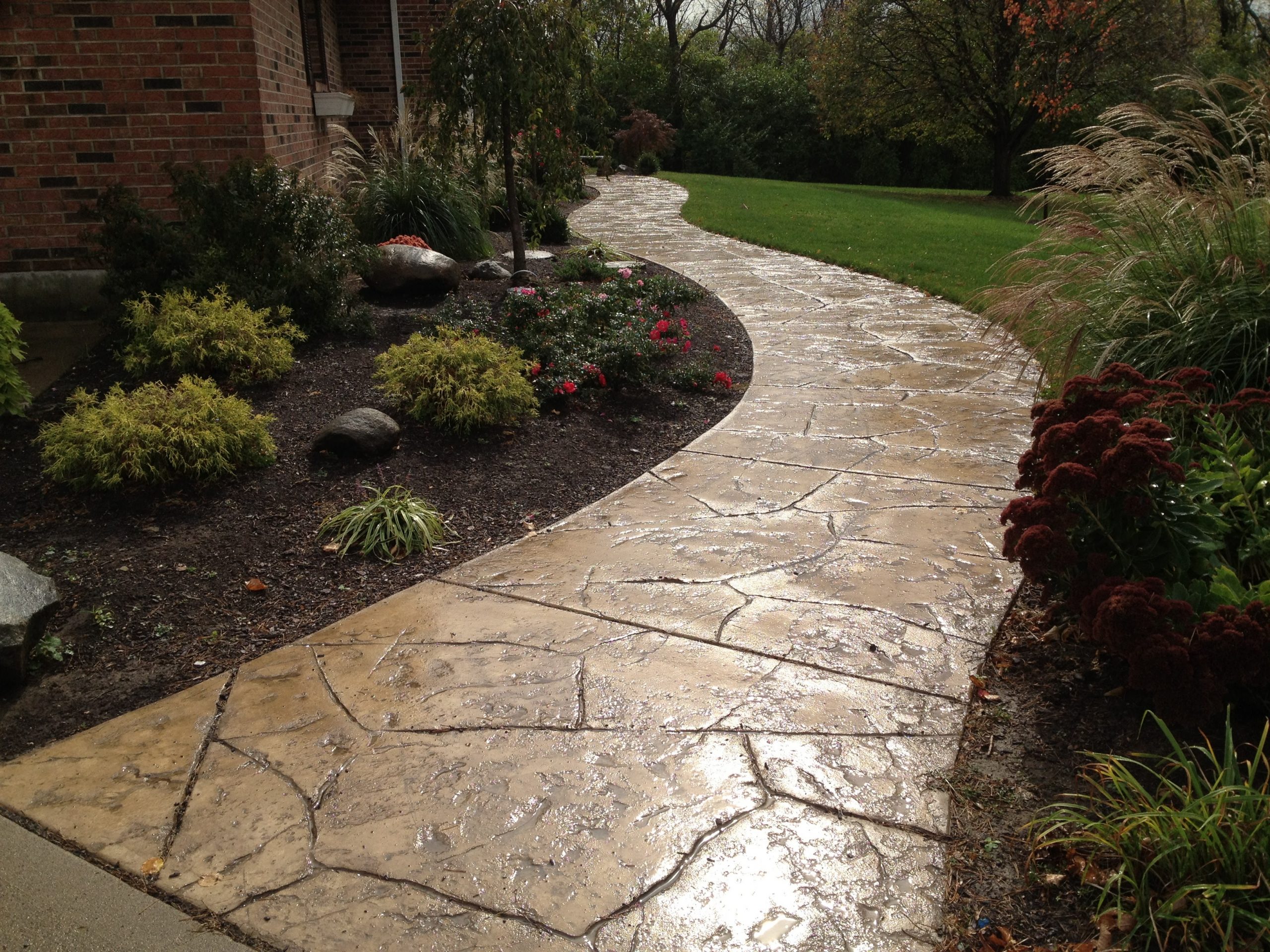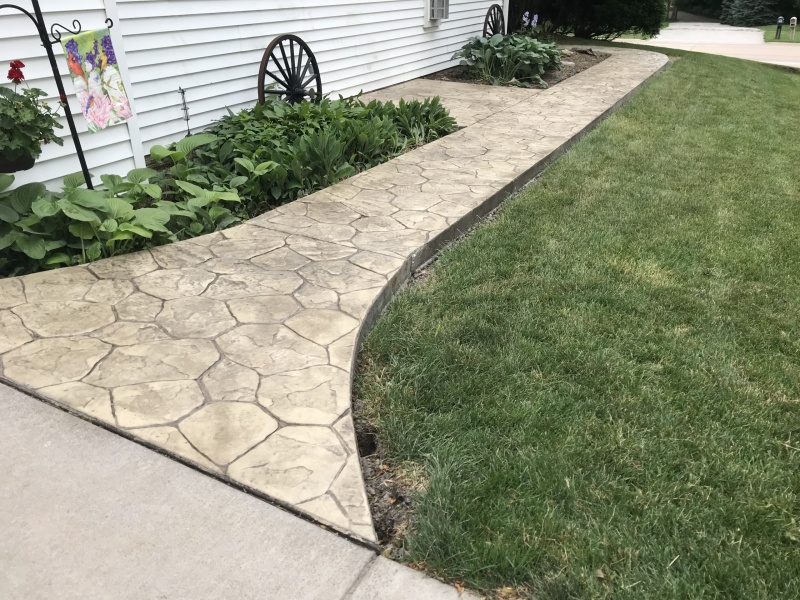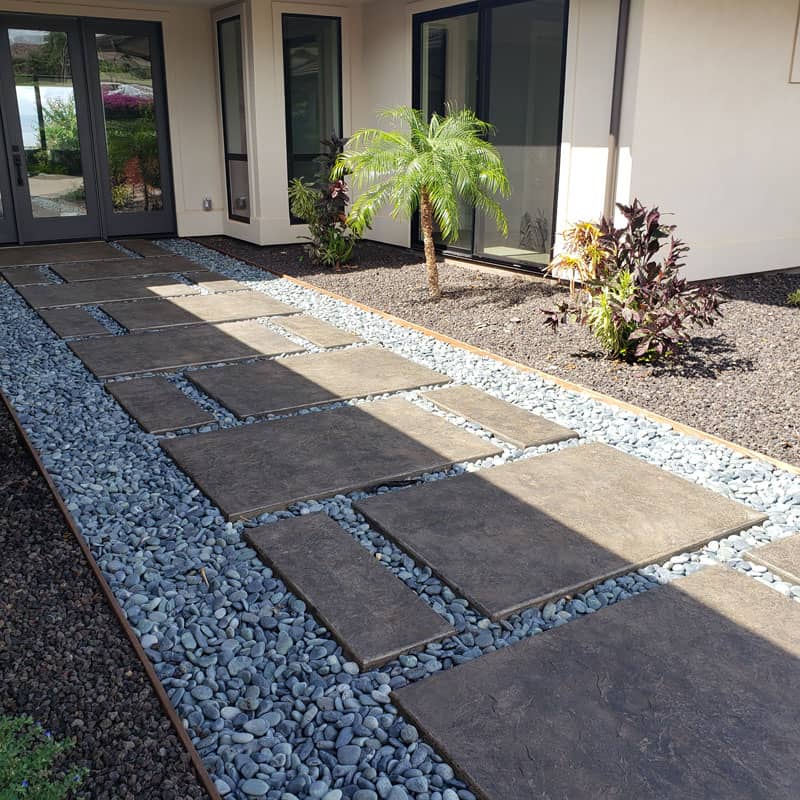Decorative concrete walkways are an incredible way to enhance the beauty and functionality of your outdoor space. From the moment you step outside, a well-designed walkway invites you to explore your garden and relax in your backyard. As someone who has installed decorative concrete walkways, I can assure you that they are not just visually appealing but also practical. In this article, we will delve into the various aspects of decorative concrete walkways, including their benefits, design options, installation process, and maintenance tips. Let’s get started!
What Are Decorative Concrete Walkways?
Decorative concrete walkways are primarily designed pathways made from concrete that have been treated or finished to achieve a specific aesthetic appeal. Unlike standard concrete, these walkways can incorporate colors, textures, and patterns that mimic natural stones, bricks, or tiles.
The Evolution of Decorative Concrete
The use of decorative concrete dates back several decades, but it has gained immense popularity over the last few years. Advances in technology have allowed for a wider range of designs, making it accessible and appealing to homeowners and commercial property owners alike.
Benefits of Decorative Concrete Walkways
There are numerous advantages to installing decorative concrete walkways. Below are some of the compelling benefits that can enhance your outdoor experience:
1. Aesthetic Appeal
One of the most significant benefits of decorative concrete walkways is their visual appeal. They can be customized to complement your home and garden design, offering an elegant touch to your outdoor space.
2. Durability and Longevity
Concrete is inherently durable, and when properly installed, a decorative concrete walkway can withstand harsh weather conditions, heavy foot traffic, and even the test of time. They can last for decades with minimal maintenance.
3. Low Maintenance Requirements
Compared to other materials such as wood or brick, decorative concrete requires far less maintenance. Regular cleaning and occasional sealing are usually all that is needed to keep them looking great.
4. Versatility in Design
Decorative concrete walkways can be tailored to fit any style or preference. From classic to modern designs, the possibilities are almost limitless.

5. Increased Property Value
Investing in quality decorative concrete walkways can enhance the overall value of your property. Prospective buyers often appreciate attractive outdoor spaces.
Common Types of Decorative Concrete Walkways
There are several types of decorative concrete that can be used for walkways, each with its unique characteristics:

1. Stamped Concrete
Stamped concrete involves pressing molds into freshly poured concrete to create patterns that resemble natural stones or bricks. This type is highly customizable and can mimic the look of expensive materials at a lower cost.
2. Stained Concrete
Staining is a technique used to enhance the color of concrete. It penetrates the surface to provide a translucent finish that can replicate the appearance of stone or tile. This is ideal for adding a pop of color to your walkway.

3. Exposed Aggregate
This style involves removing the top layer of cement to reveal the decorative stones beneath. Exposed aggregate is slip-resistant and provides a beautiful, textured finish.
4. Concrete Pavers
Pavers are pre-cast concrete blocks that come in different shapes, sizes, and colors. They can be arranged in various patterns to create intricate designs, offering versatility and ease of repair.

Comparative Analysis of Decorative Concrete Options
| Type | Aesthetic Appeal | Durability | Cost | Maintenance |
|---|---|---|---|---|
| Stamped Concrete | High | Very High | Medium | Low |
| Stained Concrete | High | High | Low | Medium |
| Exposed Aggregate | Medium | Very High | Medium | Low |
| Concrete Pavers | Very High | High | High | Medium |
How to Design Your Decorative Concrete Walkway
Designing a decorative concrete walkway requires careful thought and planning. Below are essential factors to consider:

1. Determine the Pathway Location
Identify where you want your walkway to lead. Whether it’s from the driveway to the front door or meandering through the garden, the location plays a crucial role in the design process.
2. Choose the Right Material
Based on your aesthetic preference and budget, select the type of decorative concrete that suits your needs best. Each material comes with its benefits and challenges.

3. Select Colors and Patterns
Your color scheme should complement your home’s exterior. Consider the surrounding landscape, and choose patterns that enhance the overall design without overpowering it.
4. Plan for Slope and Drainage
Effective drainage is essential to prevent water accumulation on your walkway. Ensure your design includes a slight slope to direct water away from your home.
5. Consult a Professional
If you’re unsure about the design or installation process, consider hiring a professional contractor. They can help bring your vision to life while ensuring quality work and compliance with local codes.
Installation Process for Decorative Concrete Walkways
Now that you’ve designed your walkway, it’s time to discuss the installation process. Here’s a step-by-step guide:
1. Preparation of the Site
Begin by clearing the area where the walkway will be installed. Remove any grass, bushes, or debris that may obstruct the pathway.
2. Marking the Pathway
Use string and stakes to outline the walkway’s shape. This will help visualize the finished product and ensure accurate measurements.
3. Excavation
Excavate the marked area to a depth of about 4-6 inches, depending on the type of concrete you’re using. This will provide a solid base for your walkway.
4. Installing a Base Layer
Compact the soil at the bottom of the excavation and lay down a base layer of gravel to facilitate drainage and stability.
5. Pouring Concrete
Mix and pour the concrete into the excavated area. Use a trowel to level it and ensure a smooth finish.
6. Applying Decorative Finishes
While the concrete is still wet, you can apply stains, stamps, or any other decorative elements as per your design plan.
7. Curing the Concrete
Allow the concrete to cure for at least a week to ensure it gains its full strength. Keep it moist during this period to enhance durability.
Maintenance Tips for Decorative Concrete Walkways
To prolong the life and appearance of your decorative concrete walkway, follow these maintenance tips:
1. Regular Cleaning
Keep your walkway clean by sweeping or hosing it down to prevent dirt and debris accumulation.
2. Seal the Surface
Consider applying a concrete sealant every few years to protect the surface from moisture and UV damage.
3. Repair Cracks Promptly
Inspect your walkway for cracks or chips. Addressing damages promptly can prevent further deterioration.
4. Avoid Heavy Loads
Be mindful of the weight on your walkway. Heavy objects can lead to cracking or sinking, affecting the overall integrity.
Cost Considerations for Decorative Concrete Walkways
Understanding the cost of decorative concrete walkways is crucial for budget planning. Here are some factors that can influence the price:
1. Type of Decorative Finish
The choice between stamped, stained, exposed aggregate, or pavers will significantly impact the price. Some options may require more labor-intensive installation than others.
2. Size of the Walkway
Natural, larger walkways will naturally incur higher costs due to the increased amount of materials needed and potential labor.
3. Additional Features
Incorporating curves, patterns, or lighting can add to the overall cost but may enhance aesthetic appeal and functionality.
4. Installation vs. DIY
Hiring a professional contractor will generally increase costs compared to a DIY project, but ensure the work is done correctly and efficiently.
Frequently Asked Questions (FAQs)
1. How long does decorative concrete last?
With proper installation and maintenance, decorative concrete walkways can last for 25-30 years or even longer.
2. Can I install decorative concrete walkways myself?
While it’s possible to DIY, hiring a professional is advisable to ensure quality results and avoid potential issues.
3. What are the best sealants for decorative concrete?
Look for high-quality acrylic or polyurethane sealants designed specifically for decorative concrete to ensure durability and protection.
4. Is decorative concrete slippery?
Textured finishes, like exposed aggregate, are less slippery than smooth surfaces. You can also use slip-resistant additives in sealers for enhanced safety.
5. Can decorative concrete be repaired?
Yes, decorative concrete can be repaired. Addressing any cracks or chips promptly can help maintain its appearance and structural integrity.
Conclusion
Decorative concrete walkways not only enhance the beauty of your outdoor space but also provide a durable and low-maintenance solution for navigating your property. As you plan for your own decorative concrete walkway, consider the various materials, designs, and maintenance practices discussed in this article. Whether you choose to DIY or hire a professional, a well-made decorative concrete walkway can increase your property’s value and enhance your outdoor experience for years to come.